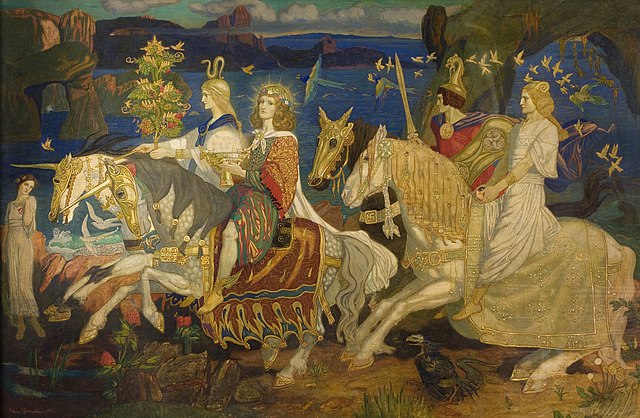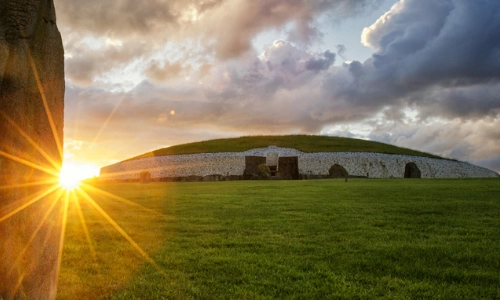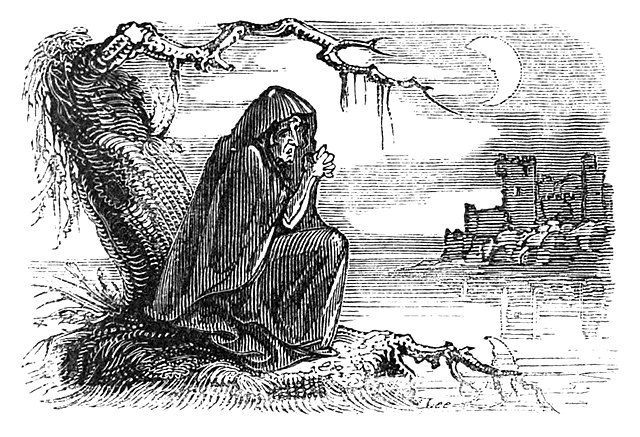Irish Folklore and the Otherworld
Irish folklore is filled with fascinating stories that have been passed down through generations, keeping Ireland’s culture and traditions alive. At the heart of these stories lies the mysterious Otherworld, a mystical realm central to many Irish myths and legends. This blog explores the connection between Irish folklore and the Otherworld, uncovering its significance and lasting influence.
Table of Contents
Understanding the Otherworld
The Otherworld in Irish mythology is a magical and timeless realm that exists alongside our own. It is often described as a land of eternal beauty, abundance, and wonder. Known by various names such as Tír na nÓg (the Land of Eternal Youth), Mag Mell (the Plain of Delight), and Tech Duinn (the House of Donn), the Otherworld is a place where the rules of time and mortality do not apply. However, it is not without its dangers, as it is also home to powerful beings and spirits.
The Otherworld and Its Inhabitants

The Otherworld is closely tied to the Tuatha Dé Danann, the supernatural race often regarded as Ireland’s ancient gods. After their defeat by the Milesians, the Tuatha Dé Danann retreated into the Otherworld, where they continued to play a role in Irish folklore. They are often associated with fairy mounds or sidhe, which are said to act as portals to their hidden realm.
Other beings linked to the Otherworld include:
- The Banshee, a harbinger of death, whose mournful wail signals the passing of a loved one.
- Fairies (Sidhe), who are both benevolent and mischievous, guard the secrets of the Otherworld.
- Manannán mac Lir is the sea god who serves as a guide for souls journeying to the Otherworld.
How Mortals Interact with the Otherworld

Irish folklore is rich with tales of mortals who venture into the Otherworld, often through specific portals:
- Fairy mounds are believed to be ancient burial sites that act as gateways.
- Thin places, such as sacred wells, caves, and forests, are where the veil between our world and the Otherworld is considered especially thin.
Certain times of the year, like Samhain, mark periods when the boundary between the worlds is weakest. During these times, spirits from the Otherworld are said to walk among the living.
Some famous stories of mortal journeys include:
- Oisín and Tír na nÓg, where the hero Oisín follows the enchanting Niamh to a land of eternal youth but discovers centuries have passed when he returns.
- The Voyage of Bran is a tale of an epic journey to the Otherworld, encountering fantastical islands and beings.
- Cú Chulainn’s encounters, where the hero faces supernatural challenges and meets beings from the Otherworld.
Themes of Life, Death, and Renewal
The Otherworld often represents the cycle of life, death, and renewal. It is considered a place where souls go after death, offering solace and a sense of continuity. Figures like Manannán mac Lir guide these souls, ensuring a safe passage. The Otherworld’s associations with immortality and eternal youth also highlight themes of renewal and transcendence, making it a symbol of hope and mystery.
Superstitions and the Otherworld in Daily Life

Irish traditions reflect a deep respect for the Otherworld and its inhabitants. Superstitions abound, warning against disturbing fairy forts or cutting down fairy trees, as such actions are believed to invite bad luck. Offerings are often left at sacred sites to honour the Otherworld’s beings and maintain harmony between the two realms.
Modern Connections to the Otherworld
The concept of the Otherworld continues to inspire modern Irish culture. Its influence can be seen in literature, art, and storytelling. Tourist sites linked to the Otherworld, such as ancient mounds and sacred wells, draw visitors eager to connect with Ireland’s mythical past.
In today’s world, the Otherworld remains a source of fascination. Its stories remind us of the mysteries of life, the unseen forces that shape our world, and the importance of respecting nature and the unknown.
Conclusion
The connection between Irish folklore and the Otherworld is a testament to Ireland’s rich cultural heritage. These stories not only entertain but also preserve a sense of wonder and spirituality that continues to captivate people worldwide. By exploring the myths and legends of the Otherworld, we gain a deeper appreciation of Irish culture and its enduring legacy.
Have you ever visited a fairy fort or sacred site in Ireland?
Do you have a favourite story about the Otherworld?
Share your thoughts in the comments below! And if you’re curious about Ireland’s mythical places, consider planning a trip to experience the magic.
Recommended Reading:
- Lady Augusta Gregory’s Gods and Fighting Men
- T.W. Rolleston’s Celtic Myths and Legends
- Marie-Louise Sjoestedt’s Gods and Heroes of the Celts
